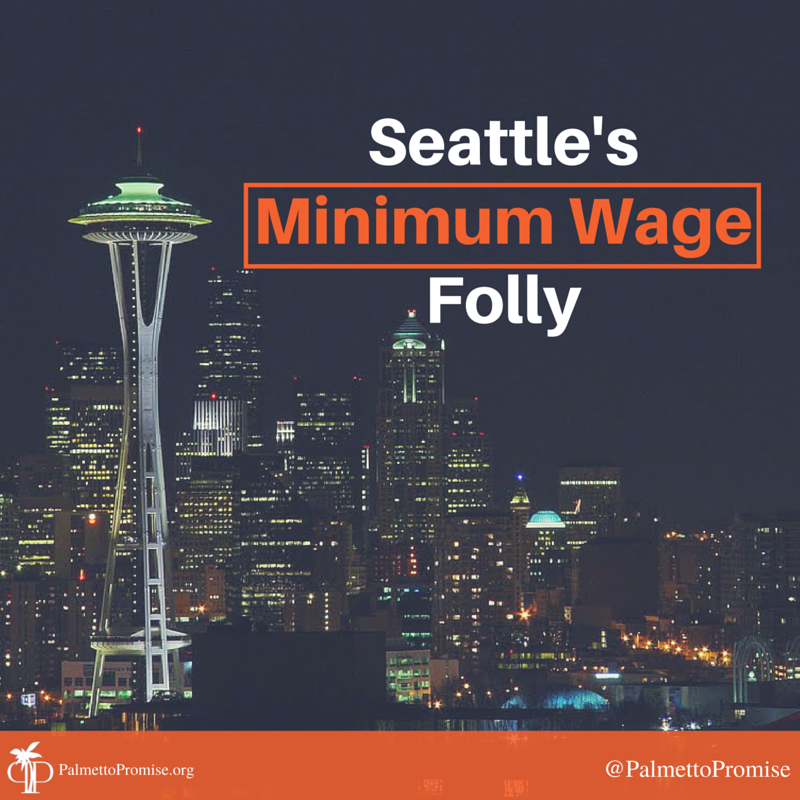Seattle’s Minimum Wage Folly

Adam Crain
Last April, when the Seattle City Council approved a gradual minimum wage increase to fifteen dollars per hour over the course of five years, it was heralded by the economic and social left as the next step in rebuilding a middle class economy.
It seems inherently unfair that someone could work full time in the United States of America and still live at or near the poverty line. But instead of learning the lessons of history, the economic left consistently promotes and implements, old economic policies that mirror those of the New Deal and Lyndon B. Johnson era. From the moment of implementation, minimum wage hikes have proven to be well-intentioned but misguided…often creating dire unintended consequences.
In September, Palmetto Promise published a post call Broken Windows and the Minimum Wage, lamenting “stage one thinking” which takes into account only the immediate effects of a policy – in this case, the “feel good” factor of a sizeable wage increase. Thinking beyond the first stage, we argued, would lead one to take into account at least four more consequences of a minimum wage increase:
- A minimum wage increase hits small businesses harder than big businesses.
- A minimum wage increase provides motivation for businesses to ship more jobs overseas.
- A minimum wage increase raises prices, offsetting the wage increase.
- A minimum wage increase reduces the number of opportunities for unexperienced workers to gain valuable experience.
[popuppress id=”3155″]
Ten months following the implementation of Seattle’s minimum wage increase, how is the city doing? American Enterprise Institute (AEI) points to new economic data from Seattle as evidence that a minimum wage increase is not smart policy for real people. The American Enterprise Institute analyzed information by the Bureau of Labor Statistics to illustrate the effects of this minimum wage hike:
- Between April and December of 2015, after the minimum wage increase went into effect, the drop in the employment rate was the biggest decline in any nine month period since 2009, when the Great Recession gutted employment across the nation.*
- Between April and December of 2015, the number of unemployed men and women rose to its largest number since 2009.*
- Between April and December of 2015, Seattle saw the largest growth in the unemployment rate in a nine month period since 2009.*
*(Source: Perry, Mark J. “New Evidence Suggests That Seattle’s ‘radical Experiment’ Might Be a Model for the Rest of the Nation Not to Follow.” American Enterprise Institute, 18 Feb. 2016. Web.)
Clearly, the minimum wage increase has not helped the middle class in Seattle. Though men and women who are working at minimum wage jobs have undoubtedly taken home more money, the unemployment rate is rising and hours are falling. A strong middle class is essential to the vibrancy of the American economy, but “stage one thinking” has led to the implementation of public policy that actually hurts the middle class.
Minimum wage jobs have never been understood to be the final destination of job seekers. Instead, in a vibrant economy, a minimum wage job is just a rung in the climb up the economic ladder. While it was well-intentioned, Seattle’s minimum wage increase is actually pulling the ladder of opportunity away from those who need it most. This is not the example South Carolina should follow.






